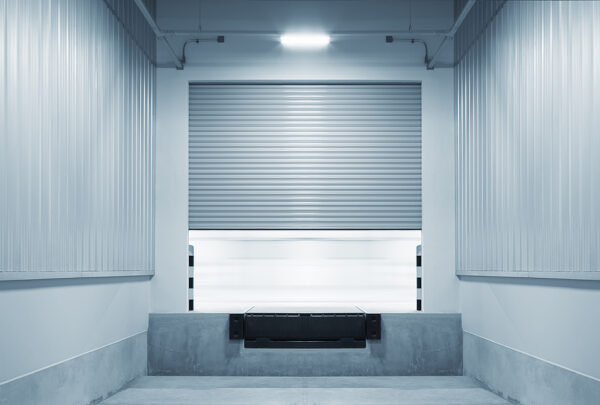How to Improve Loading Dock Efficiency: the Effective Tips
Material Handling Zones (MHZ) are common to all distribution centers. They are also commonly called the loading dock.
In manufacturing or distribution facilities, the loading and unloading portals act as the connecting point between the yard and the warehouse.
Distribution facilities ship and receive goods from the dock, which connects business operations and the outside world.
But docking takes significant time, and that is what needs to be managed. In business, time is money, and companies should use time efficiently.
Since docking is a time-consuming process, efficiency in the dock area is crucial to maximizing the bottom line.

So, how to increase efficiency in the docking process? Here are the steps:
Get the Right Dock Design
The design of a dock matters a lot in maintaining efficiency. So, ensure that the design of your dock is right.
You can regard poor loading dock design as a big reason for inefficiency in the material handling zone.
Inappropriate design can also arise when you purchase a building that was occupied by a tenant who ran a different business. So, the tenant might have designed the dock to suit his business. The design may support a different flow pattern or lesser traffic flow which might not suit your business.
A common term used for poorly designed loading docks is “bottleneck,” which describes the situation where the shipping and receiving activities exceed the handling capacity of the dock.
Bottlenecks arise due to insufficient space. You can overcome the constraint by properly designing the dock to make it more operational.
It will help if you design your dock with more oversized overhead doors. And ensure that dock levelers are at the right heights to ease the flow.
The minimum dimension of a locking dock door should be 10 feet by 10 feet to accommodate large semi-trailers. There is also an effective way to increase the use of limited space in a dock, called Vertical Stacking.
Quality Material Handling Equipment
Invest in excellent material handling equipment to make the loading dock highly efficient. You should put in place the right loading dock design to make the working environment safe and improve communications in the workplace.
Some high-quality equipment calls for significant investments. But, not all excellent equipment is expensive.
Equipment, like automated and data-based management systems, come at fairly higher prices. And if you overhaul the loading dock area by inducting it with smooth flowing conveyors, wrappers, and powerful lifts, you need to incur significant money out-go.
Ensure the safety devices are simple as they can impact efficiency seriously apart from easy to implement.
Automate
Shun manual methods of operating your dock, instead automate it to increase efficiency. Automation of the docking process will cut down the manual planning and data recording hours for your employees.
There are many ways of implementing loading dock automation, such as:
Stretch Wrapping Machines
These machines play an essential role in efficiently organizing your loading dock. Stretch wrapping loaded pallets provides security to your shipments.
It will be a great initiative to invest in a stretch wrapping machine. You have the option to choose from the turntable, overhead-arm, or automated robotic stretch wrappers.
Global Positioning Satellite (GPS) and Radio Frequency Identification (RFID) Technology
These components enable the loading dock controller to know individual trailers’ presence and the inbound and outbound trailers. Moreover, the controller can know the goods on each trailer due to the components.
How does your business benefit as a result? They reduce human intervention time and the chances of costly errors.
Warehouse Management Systems (WMS)
Automating your warehouse inventory accounting and tracking systems is not enough to reap the full benefits of automation.
You should also integrate the shipping and receiving areas with Warehouse Management Systems.
If you fail to integrate, there can be a lack of communication, leading to inefficiency.
Automated Equipment
An efficient way of detecting trailer movement is to implement automation in overhead doors, leveling ramps, vehicle restraint systems, coordinated light signals, and sensors detecting trailer movement.
Automating goods transfer from warehouse shelves to trailer beds can be done by using tele conveyors.
Efficient Dock Layouts
An inefficient dock layout will create hassles from the docking center to the yard and into the warehouse. Workers need to make excessive trips to the event statistician, wasting valuable time.
Machines also undergo wear and tear due to inefficient dock layouts and consume more energy.
You can get rid of such unwanted events by putting in place an improved loading dock design.
Improve Dock Communications
Poor communication is a significant hindrance to efficiency in loading docks. By good communication, we are not referring to verbal or digital communication, but an environment where everyone in the facility knows what they are doing and how it influences all present.
You should ensure good communication right from instructing workers on the loading dock to matters like how to secure a pallet.
Good communication helps dock operations run smoothly, efficiently, and safely. There are multiple types of communication, such as:
Verbal
Locks are noisy places. When workers speak to one another, noise on the dock can hamper their communication.
Noise emanating from trucks, forklifts, and the hum from rollers and machinery can cause miscommunication among workers.
Therefore, you should invest in personal communication devices like earpiece inserts and handheld visual displays to improve communication to improve efficiency on the dock.
Advanced Communication Light Systems
Lighting systems play a crucial role in enabling truck drivers to operate smoothly. Advanced color-coded lights indicate to truck drivers the areas to align with and when to proceed.
Interior traffic lights enable workers to know when it is safe to cross forklift paths and when not.
Indicator lights at the top corners of dock doors allow managers to know the loading stage at a particular trailer.
Such communication systems keep traffic flowing efficiently.
Wireless Communication
Implementation of wireless technology can improve efficiency on docks.
A swipe of a barcode scanner enables you to relay Stock Keeping Unit information to a central processing center.
GPS and RFID tracking enable managers to know the locations of inventory, trailers, and machinery apart from the corresponding shipping stages.
Conclusion
The efficient functioning of the dock is an essential consideration for your business to flourish. So, you should not fall behind in choosing a reputed and reliable dock equipment provider to purchase the necessary equipment. Only the right equipment can ensure efficient dock operations.










![Cars and Mythology [Infographic]](https://technofaq.org/wp-content/uploads/2017/02/Car-Gods-final-text-edit-version-150x150.png)





